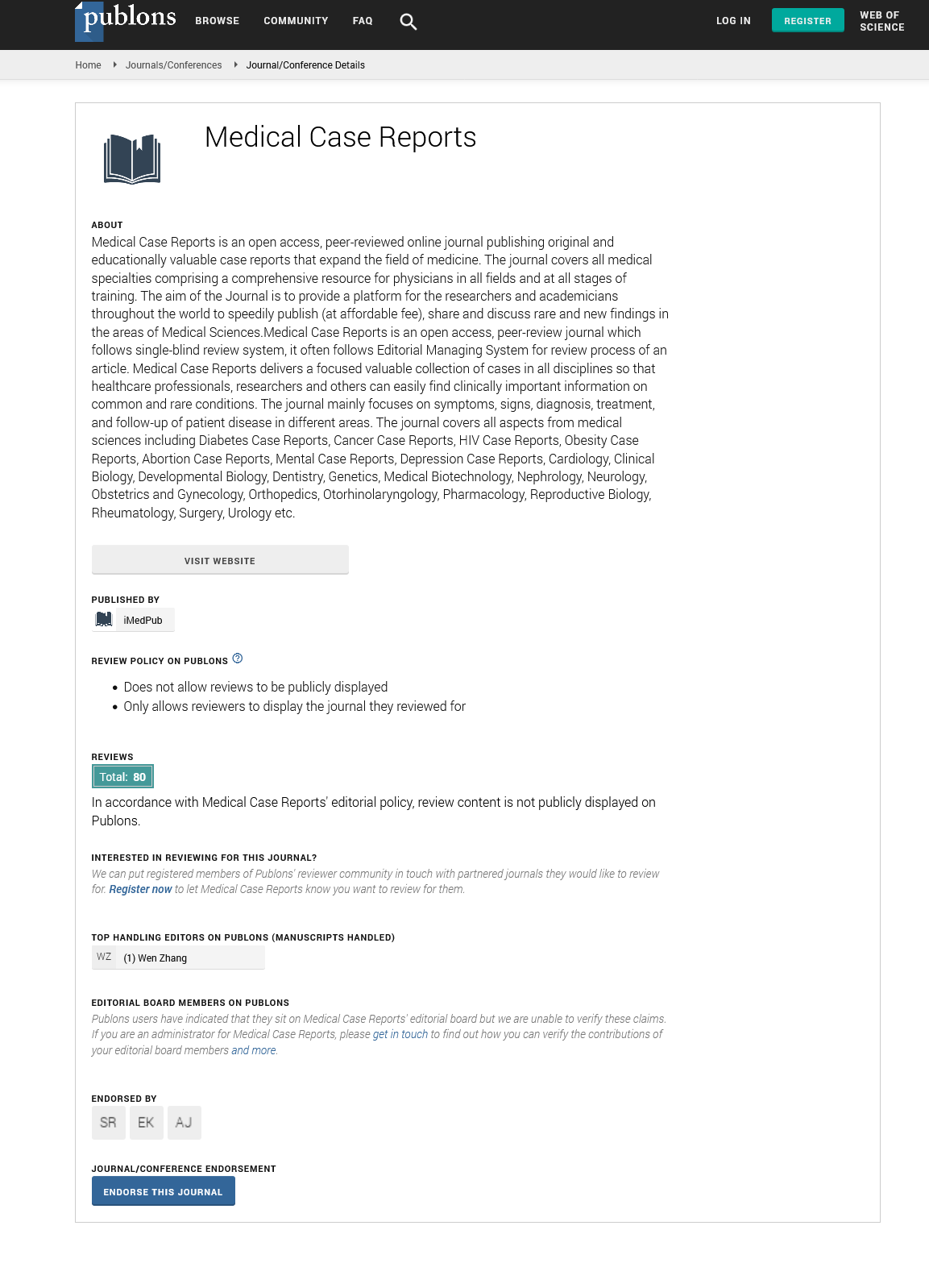Abstract
Laparoscopic Cholecystectomy of Gallbladder Stone Presenting as Empyema in a 9 Year-Old Boy: A Case Report
Background: The gall bladder stones (GBS) are common disease related to diet habit, obesity, hematological diseases, diabetes mellitus and receiving total parenteral nutrition. GBS is a rare cause of hospitalization of pediatric patients but have been increasingly diagnosed in recent years due to widespread use of ultrasonography. The aim of this case report study is to determine the clinical presentation, risk factors, valuable diagnostic procedures and outcome of laparoscopic management of cholelithiasis in children. Case report: Our case is a 9-year-old boy with empyemic gallbladder complaining of attacks of colicky epigastric pain associated with recurrent vomiting. On abdominal palpation, there is positive sign of deep tenderness at hypochondrium area and positive murphy sign. He has central obesity with BMI 29.9, skin folds more than 3.5 cm and waist circumference more than 90 cm. He has History of high cholesterol and fatty diet and fast food habit, prolonged intake of vitamin D and positive family history. While, no other associated risk factors were detected in our patient. All laboratory investigations were within normal ranges even for his lipid profile. Although, empyema was present, no leukocytosis was detected. Abdominal ultrasound showed the gall bladder wall is slightly thick surrounded by pericholycystic fluid, solitary gall bladder stone of 3 cm size and normal CBD. While, post-operative histopathological examination revealed thick wall gallbladder with multiple tiny stones of cholesterol type. The patient was treated with laparoscopic cholecystectomy with promising outcome and no complications. Conclusion: Pediatric surgeons should consider cholecystolithiasis as from differential diagnosis of abdominal pain associated with vomiting in children. Empyema of gallbladder should be considered once murphy sign is positive in such child patients. Child obesity, fatty diet, vitamin D deï¬ÃÆââ¬Å¡ÃâÃÂciency and family history are possible risk factors. Ultrasonography is the mainstay of diagnosis. Laparoscopic cholecystectomy is the appropriate management for symptomatic cholelithiasis in children.
Author(s):
Sidoun M*, Elfageh M, Belhaje A and Elfageh W
Abstract | Full-Text | PDF
Share this

Google scholar citation report
Citations : 241
Medical Case Reports received 241 citations as per google scholar report
Medical Case Reports peer review process verified at publons
Abstracted/Indexed in
- Google Scholar
- China National Knowledge Infrastructure (CNKI)
- Cosmos IF
- Directory of Research Journal Indexing (DRJI)
- WorldCat
- Publons
- Secret Search Engine Labs
- Euro Pub
Open Access Journals
- Aquaculture & Veterinary Science
- Chemistry & Chemical Sciences
- Clinical Sciences
- Engineering
- General Science
- Genetics & Molecular Biology
- Health Care & Nursing
- Immunology & Microbiology
- Materials Science
- Mathematics & Physics
- Medical Sciences
- Neurology & Psychiatry
- Oncology & Cancer Science
- Pharmaceutical Sciences


